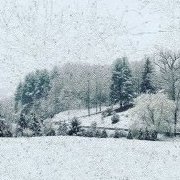-
Posts
16,366 -
Joined
-
Last visited
About Carvers Gap

Profile Information
-
Four Letter Airport Code For Weather Obs (Such as KDCA)
KTRI
-
Gender
Male
-
Location:
Tri-Cities, TN
Recent Profile Visitors
17,111 profile views
-
IF the NAO were to hold w/ the 18z GFS look in the Pacific late in that run....now, that would be fun. What an EPO ridge on that run. I have no idea if the flip flopping is over(prob not), but what a reversal after d8 when compared to 12z for the GFS. Still plenty of uncertainty, but trends have been decent today. I may be back later. If not, I hope all of you have had a great Christmas w/ still more hours to enjoy. I have to admit, I enjoyed running in the 50 degree temps this morning - don't think bad of me! Haha.
-
The 18z is a jailbreak pattern after 300 in fantasy land. It pretty much mirrors the GEM runs, but about a week later. I think modeling just isn't sure which cold front to send the cold with...we noted that yesterday or this morning. Good trends, but a ways to go.
-
The 18z GFS continues on its own solution path. But it kind of still manages to get to where other models are by about Jan 6. For those who are enjoying Alaska extreme runs...That is a -85.4 reading. And the EPO ridge pops....all of that is headed for the Canadian Prairies. It modifies quickly as it heads south and east...but that is the ticket if you want winter.
-
Here is another nugget from the 18z ICON. It isn't a December map, but extrapolate...LOL. addendum: The way that run looked. It had the PNA locked into the West w/ the AO and NAO negative. If the GFS can back its trough up just a little, it gets here IMHO. At 18z it isn't there, but it trended that way again at 500.
-
I really am interested in the Jan 2nd timeframe. If we can hit that in a reloading pattern, that would be good IMHO. Here are ensemble members for major ensembles. Only the GEFS is void. I wouldn't list it as an outlier quite yet, but with the 12z GFS trends...probably it is. Pretty nice uptick since yesterday. In the unlikely chance the GEM hits a coup(along with its ensemble), that would be an impressive cold air regime which pinwheels in. Still plenty of uncertainty as of yet.
-
Texas or sure needs a MUCH better Pacific. We just need a serviceable Pacific w/ the NAO in place. I think climatology eventually wins with this setup. For mountain areas, climatology could win bigly. Foothills areas....TBD. Middle and western areas...I would say sliders are the best opportunity w/ the NAO. But we'll see. You all usually find a way to score w/ Nina winters and ample cold. Even souther areas of the forum(northern regions of the Gulf states have a shot).
-
Here is the 30day map. There are several good time frames in here which are washed out - day 7 increments have those. Really, there is a window between, Jan6-20. The graphic above(from me) makes it look like we have to wait until week 3. No, the good window is now on today's 12z EPS run(not the Weeklies). I wanted to add this one so you all can see where the NAO is centered...right over the Davis Straits. @Golf757075, there it is. Let's see if it verifies. There is another window to start February. Now, that is shades of 95-96 IMHO. To get off to a good start, we need a cold front on Jan 2 and/or 5th to score w/ getting cold into the forum area. Cold in place almost always is our best way forward. I kind of wanted to make sure the past day or two of weeklies runs weren't one-offs...before commenting. But still, proceed at your own risk. Models have been absolutely treacherous at this range.
-
@John1122, I am not sure I trust the Euro Weeklies right now, but as @GaWxnoted...pretty big changes in the week 3-5 range. Basically, the pattern just is wash...rinse...repeat. NAO/Aleutian high -> NAO/+PNA...over and over. This is week 3, and would be awesome to have for peak climatology.
-

December 2025 Short/Medium Range Forecast Thread
Carvers Gap replied to John1122's topic in Tennessee Valley
For really the first time in a few weeks, ensembles are pretty bullish with the exception of the GFS/GEFS which are just worlds apart from any other model - even its own AI model. They are outliers. In my book, though, the deterministic models have led the way. Something is not right w/ wx modeling right now. I maybe can remember one winter where modeling was completely blind to cold fronts. The GEM, with its cold bias, is useful right now, because it exaggerates the pattern enough to find them. Sometimes when graphics are exaggerated (like increasing exposure on a camera), one can spot details which can't be spotted otherwise. In this case, the GEM is spotting cold fronts in a similar manner. Just subtract the cold bias. My guess is the mistakes are occurring with the MJO region which has no real clear signal, the extreme cold in Canada, the NAO stepping onto the scene, and was the Aleutian high over estimated in terms of staying power? Throw in some atmospheric river stuff...and it is understandable that struggles are occurring. But this deal where the GFS can't even see a cold front past d7 is really weird - something has been tweaked in the model IMHO. It is just missing wildly right now...unless the pattern is warm. -

December 2025 Short/Medium Range Forecast Thread
Carvers Gap replied to John1122's topic in Tennessee Valley
The trend of models being blind to cold fronts (until a week out) appears to be continuing. Just so very odd. -

December 2025 Short/Medium Range Forecast Thread
Carvers Gap replied to John1122's topic in Tennessee Valley
I mean the Jan 2 trends are pretty stark. Models don’t have the below zero axis of the cold air mass on the GEM, but they have completely erased positive temp anomalies at that time and shifted SW with the cold towards the Ohio and Tennessee Valley regions. -

December 2025 Short/Medium Range Forecast Thread
Carvers Gap replied to John1122's topic in Tennessee Valley
12z trends are towards the GEM…to be clear not to that extreme, but a cold eastern US. -

December 2025 Short/Medium Range Forecast Thread
Carvers Gap replied to John1122's topic in Tennessee Valley
The 12z ICON has moved to the 0z GEM at 500. Let's see if the 12z GEM actually holds to the 0z GEM! -

December 2025 Short/Medium Range Forecast Thread
Carvers Gap replied to John1122's topic in Tennessee Valley
As for Mammoth...their webcams are awesome. I dropped a link for their cams on the mountain. Just another world for snow rates. The cams range from 8000' to 11000'. We stayed at 9000' this past summer when we were out there. It is crazy to see everything buried now. The ground was bare two days ago - they had almost no snow below 9500'. Very late season for them. (Some Colorado resorts further east still have bare ground.) If they didn't get this storm, I am not sure when they get another window like this. But...it is easy to see how the Donner party got caught. People were hiking up until two days ago in the 10,000' range...today, you would be stuck. I mean the ground in the Sierra Nevada was bare. They have been super warm while the East has been cold. The 6z AIGEFS lent a bit of support to the 0z GEM - it doubled its colder members since 0z. We probably are going to have to look at ensemble members in order to sort the cold fronts out for early January. The mean will continue to be skewed until the last minute I think. https://www.mammothmountain.com/on-the-mountain/mammoth-webcam/woolly-cam -

December 2025 Short/Medium Range Forecast Thread
Carvers Gap replied to John1122's topic in Tennessee Valley
The GFS IMHO continues to be a bit of an outlier as it forms and breaks down the NAO rapidly. I can’t find another model doing that. I can’t remember which model handles the NAO better. Who know? It might be right. The GEM is another adamant outlier outlier with its solution. I would guess it continues to trend towards a NE cold shot vs Deep South. But it has a good habit of finding cold fronts, albeit too intense with its solutions. The Euro looks like good middle ground - for now. I would not be surprised to see models trend colder after a warming trend over night. We have entered that 5-7 day window where things get lost. Also, it would not be surprising if models were simply too quick with the cold. I am noticing a trend to send the cold on Jan 5 instead of 2nd….even the 8th. Models are bouncing between those dates. Remember in late November that modeling had the cold, lost it, and then brought it back. I would not be surprised if we see something similar now. Been kind of a weird year with model biases and feedback. With the exception of the GFS, other modeling has the NAO. So, a great sign that it is still present. I think it is the Euro which eliminates the Aleutian high late in its run. Either way, Merry Christmas to all of you! Have a great day!!!









